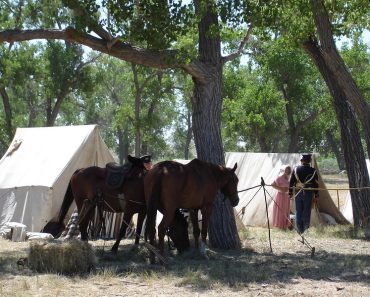The horse’s movement is responsible. If there was a single incentive for a man to become interested in the horse, it would be because of his mobility. When man first saw the horse, he recognized an opportunity.
Horses have served man in battle and allowed him to travel long distances. He has dug our fields and raised our children, and he has done so with a precision of grace and movement that is unrivalled by any other creature on earth. So, how do horses go about their business? And what is it about their performance that has had such an enduring influence on humanity?
Horses Movement & the Horse Gaits
Horse gaits are locomotion achieved by a horse’s legs. The movement of an animal’s legs for horse gaits, in particular, would be quadrupedal forward propulsion of the centre of gravity. Perhaps it is simpler to conceive of the phrase “horse gaits” meaning “how a horse is moving.” However, one key term from our technical definition explains why horses move as they do.
Centring Your Horse: The Gait & Center of Gravity
What comes to mind when you hear the phrase “centre of gravity”? I’m guessing that most of you immediately connected the centre of balance with the concept of equilibrium. Balance is what allows individuals, animals, and things to stand upright while in motion. This is simple for humans or two-legged bipeds as we walk on two legs. In fact, regardless of how fast we go, all we have to do is alternate our legs to maintain our balance and centre of gravity. When it comes to horse gait analysis, however, this balancing act requires a little more finesse.
Balancing Act: Natural Movement, Impulsion, and Relaxation
Horses have proportionately more weight put on their foreheads and necks, which is why they must use their bodies to travel at different speeds while maintaining balance and adjusting to the centre of gravity. The various horse gaits demonstrate how horses must utilize their bodies to move at varying speeds while preserving balance and adjusting for the centre of gravity.
Trainers must take a more biological, physiological, and scientific approach to horse gaits when performing this work. Some horse gait will expose a prospect to pulling with his forelegs, dragging his hind end behind him.
Our duty as advocates and instructors is to teach the horse to balance himself by pushing up and out with his haunches while maintaining balance and relaxation. This fundamental method of balance and power, in its simplest form, is a foundation level concept in dressage.
Horse Gait Types: Natural vs. Artificial
Natural and artificial horse gaits are two types of horse gait. Natural horse gaits are those for which a horse is naturally programmed. Regardless of whether they have been tamed, horses engage in these sorts of motion.
Horse gaits that are induced by humans are called artificial horse gaits. Horse gait is a term used to refer to the various, specialized types of horse gaits, such as dressage and western riding. Some breeds, such as the Paso Fino or Tennessee Walking Horse, seem more suited to performing particular types of horse gaits naturally.
The Purpose and Function of Horse Gaits
Horses can move quadrupedally or on all four legs. There are four distinct horse gait types when a horse is quadrupedal (or four-legged). Some people have started referring to there being five different equine gaits, with the backing being the fifth. Each of these gaits has a specific function: forward movement, speed, purpose, and rhythm.

